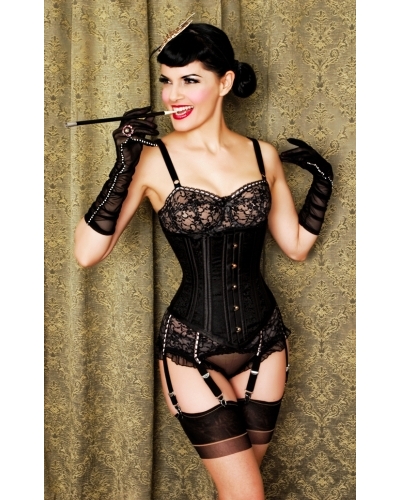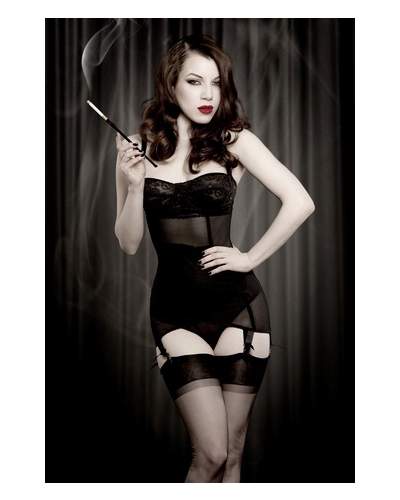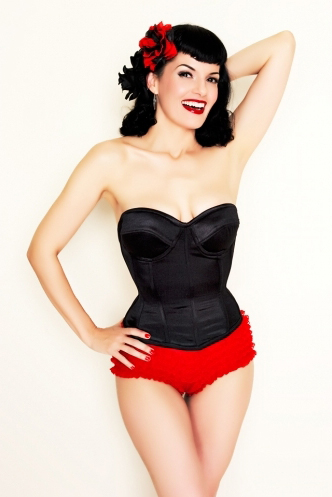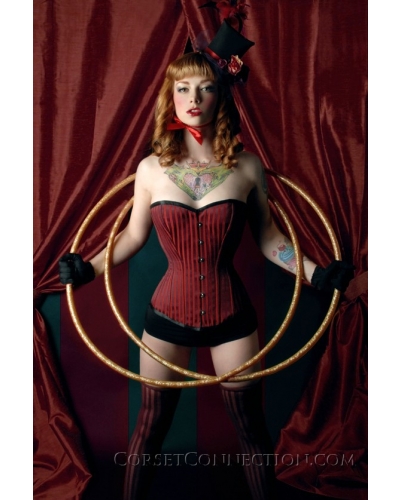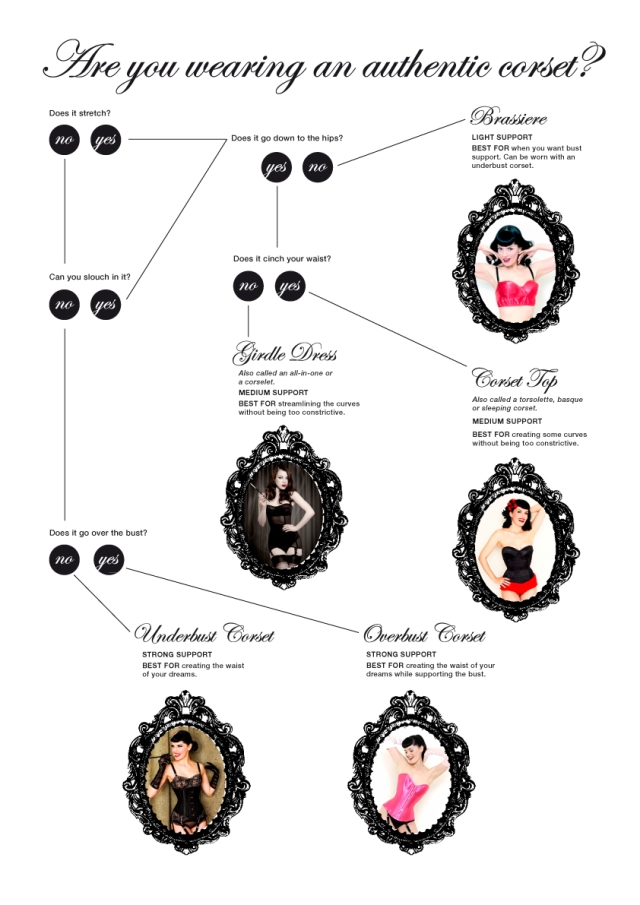This is a blog post I recently wrote for the Corset Connection blog. All images used in the post and the chart are courtesy of Corset Connection and all items are available for purchase in their online store. They have a wonderful range of steel-boned Budget Beauties available to suit every pocket. Also be sure to check out their Facebook page with all their awesome prizes and giveaways.
I bought my first corset for a high school dance and it was the most wonderful feeling to have all that rich velvet hug my body and cinch my waist into goddess-like proportions. Not only did I feel every inch a princess, I also felt empowered. I felt like I could take on the world and that nothing could stop me. I was ready to see every jaw at the dance drop as I walked by. I was ready to fight off the droves of admirers with a flick of my wrist. I was out to make small town history as their very own, real life Cinderella.
But, alas, the fairy tale didn’t last. Very soon the bones of my new corset began to buckle and bend out of shape. With every breath I could feel my waistline expand further and eventually the entire thing started unraveling at the seams. My corset had literally turned into a pumpkin.
I was angry and disappointed and my head filled with complaints. Are corsets really this flimsy? Am I really that fat? And it was then that the most important question occurred to me. The question that everyone should ask themselves if they are in the market for a corset: am I even wearing an authentic corset?
The answer for me was no. I wasn’t wearing a corset. The problem wasn’t with the top itself, but with what I had tried to do with it. Corsets have been developed over centuries of research, trial and error, and wardrobe malfunction to withstand the stresses of lacing tightly and altering or enhancing the figure. I had learned the hard way that if you try to lace any other garment like you would a corset, you may end up damaging it, or worse, hurting yourself! Likewise, if you try to wear a corset like it’s any other garment, the results will be the same.
Whenever you are looking at corsets to buy, ask yourself these questions:
Does it have laces?
Almost everything can have laces, but a corset simply cannot be a corset without it. Corsets are adjustable garments that can be laced looser or tighter as the occasion or your outfit demands. If you can’t adjust it via laces, it isn’t an authentic corset.
Can you see through it?
Lace and other sheer lingerie fabrics are not strong enough to be used in a real corset. Corsets have to operate under high stress and light, sheer fabrics simply won’t hold. Lace can be used as embellishment, but it can’t be the foundation fabric of the corset.
Can you stretch it?
If your hands can stretch it, think what your wobbly bits would be able to do to it! Coutil is a fabric that has been developed specially for corsets. It is strong, stable, doesn’t stretch and keeps the bones from breaking through. This helps a corset keep its shape, which in turn helps you to keep yours! If it can stretch it’s not an authentic corset.
Can you slouch while wearing the corset?
Most corselets and corset tops will help you with some streamlining and waist-reduction, but once you slouch they will not be able to support the weight like an authentic corset does. If it bends easily and allows you to push your tummy out a bit, it isn’t a real corset. One of the main goals of corsets throughout history has been to ensure good posture, so if it is worth its weight in steel it won’t allow slouching.
Is it cheap?
Authentic corsets are speciality garments that take a lot of skill, tools and different materials to make. Those things all cost money. If you can buy it for a few bucks out of a end-of-range bargain bin, it probably isn’t a corset. Miracles do happen, so keep your eyes peeled, but it’s always safer to pay for the quality you expect.
Of course there is nothing wrong with all the other cute tops that you tried on that aren’t steel-boned corsets! Sometimes you’ll want to wear an authentic corset and other times you just need something that looks the part but allows you some freedom of movement. So what else is there and how to tell what is what? Below are some of the options you have and also tips on how to tell them apart:
The Brassiere
Devices for supporting the breasts have been around since the time of ancient Greece, and the first modern bra was patented in 1889. The design closest to what we wear today was patented in 1914. Brassieres are usually made of soft, elastic materials that provide both support, comfort and embellishment. Usually underwires and two or more flexible plastic bones are included to help the bra keep its shape. If the strap and the body of the bra below the cups extend all the way down to the waist, it is called a bustier. This garment provides light to medium support for the bust and does not shape the torso in any way.
The Corselet
The corselet is an all in one garment that combines a light form of girdle with a brassiere. This style developed in the 1920′s when the desired figure was flat rather than curvy. The idea was to have a garment that could be anchored on the shoulders and to the garters, and so create a straight line. Today, however, they have evolved to include elastic panels and flexible plastic bones to create an understated yet feminine shape.
The Corset Top
This modern day invention looks very much like a corset, but does in fact not offer the same amount of iron-clad support as an authentic corset does. Corset tops are usually made using lighter materials an include plastic bones. They cannot stand up to the stresses of lacing tightly and will provide only a limited amount of shaping to both the waist and the bust.
The Authentic Corset
The modern authentic corset most likely evolved from the standardised everyday corsets that were first mass produced in the 1890’s. They consist of shaped panels that are supported by spring steel or spiral steel boning. It is a combination of these panels, boning and laces that gives a corset that very specific shape and the strength to support the entire torso. The top of the corset can stop below or above the breasts or anywhere in between. A general rule of thumb is that if it sits below the nipples it is an underbust corset and if sits on or above the nipples it is an overbust corset.
This Are you wearing a corset? chart allows you to look at some of the different options that are out there and you can decide what is best for you. Happy shopping!
This is a blog post I recently wrote for the Corset Connection blog. All images used in the post and the chart are courtesy of Corset Connection and all items are available for purchase in their online store. They have a wonderful range of steel-boned Budget Beauties available to suit every pocket. Also be sure to check out their Facebook page with all their awesome prizes and giveaways.
